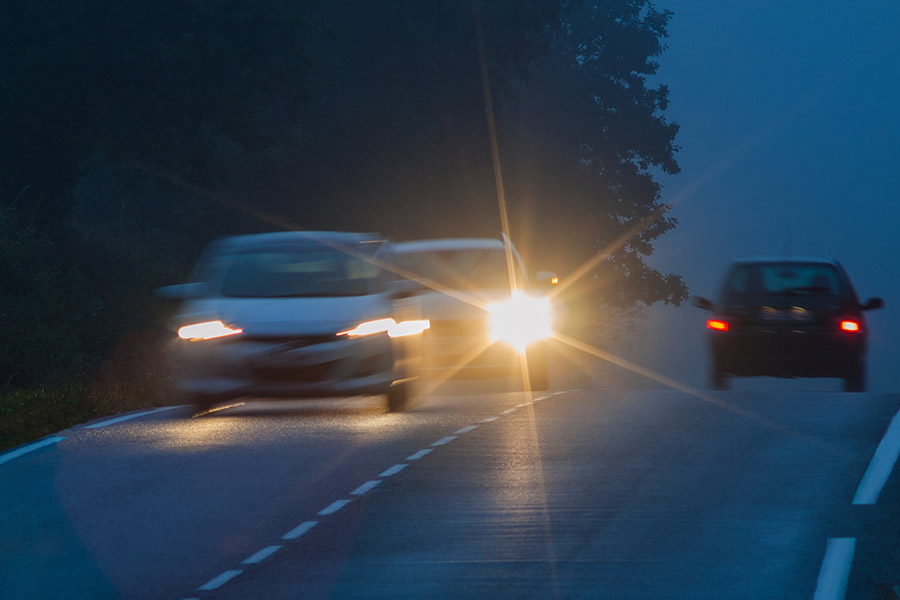Being dazzled when driving is not just unpleasant, but also dangerous. It is a common cause of accidents. A Europe-wide survey conducted by ADAC together with ten other automobile clubs, revealed that around 75 percent of drivers sometimes feel dazzled by bright lights from oncoming traffic.
How does glare affect drivers on the road?
Glare from the headlights and lights of other vehicles is not only a safety risk resulting in an increased risk of accidents, but also causes stress and discomfort for drivers. Many drivers feel impaired in the evenings in particular. Drivers complain that their visibility is restricted, especially in poor visibility conditions such as rain weather, snowfall or fog. The poorer visibility of objects is also listed as an issue. The survey also shows that it's not just older drivers who feel affected, but also many younger ones in the up to 35 age group. 21.8 percent of those surveyed even stated that they drive less in the dark overall.
What causes glare?
Drivers find it particularly disturbing when they are dazzled by the high beam of oncoming vehicles. However, the low beams are also regularly perceived as dazzling. The rear fog light is only perceived as disturbing by around a quarter of those surveyed. Daytime running lights, on the other hand, are not highlighted as having a major glare effect. However, the lighting on bicycles is increasingly being mentioned as a factor. This effect is also reinforced in the dark, and in specific ambient and weather conditions. Another factor is the increase in modern LED and laser light systems, as they can cause stronger glare.
What can drivers do to protect themselves against glare?
Most drivers react intuitively to glare. They often squint, look away briefly or, in the worst case, even close their eyes for a moment. This is a major problem for road safety. But what can drivers do to protect themselves and others from glare? The ADAC recommends the following measures: Regular checks on the light setting and the headlight range on your own vehicle, manual headlight correction when the vehicle is loaded if necessary. Regular cleaning of the headlight covers and the vehicle windscreens, switching off the rear fog light and the high beam in good time, even with automatic/adaptive systems, if they do not turn off automatically as quickly as they should. All drivers should also regularly check their vision and glasses wearers should ensure that their glasses have an anti-glare coating and are kept clean.
Glare and traffic regulations
Drivers often claim that they drove through a red traffic light or missed a road sign, for example a speed limit sign, due to glare. However, this is generally not recognised by the courts as a mitigating circumstance, as drivers are obliged to adapt their driving style to the conditions, i.e. by reducing their driving speed in this case, and paying even more attention while driving.
Conclusion
Since glare poses a safety risk in road traffic, road users should increase their own awareness and train themselves in the issue. After all, if they know what they need to pay attention to or what precautions they can take to avoid glare, this will benefit all road users. Stricter regulations in the automotive industry, such as limiting luminance, could also help to improve the situation. Last but not least, innovative lighting solutions could also ensure greater safety on the road. Adaptive lighting systems, for example, could adapt the light distribution automatically to the relevant situation.

